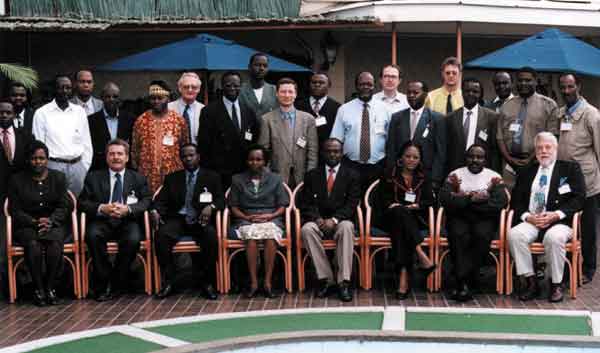Third Research Coordination Meeting of the FAO/International Atomic Energy Agency Coordination Research Programme on the Diagnosis and Control of Contagious Bovine Pleuropneumonia in Africa, Nairobi, 18-22 June 2001
The Third Research Coordination Meeting for contagious bovine pleuropneumonia (CBPP) was held in Nairobi from 18 to 22 June 2001. This meeting was attended by ten research contract holders from countries in Africa, namely: Côte d'Ivoire, Ethiopia, Ghana, Kenya, Mali, Namibia, Nigeria, Uganda, the United Republic of Tanzania and Zambia. Two agreement holders from the Centre de coopération internationale en recherche agronomique pour le développement/ Département élevage et médecine vétérinaire (CIRAD/EMVT) and the Scottish Agricultural Institute (Drs Francois Thiaucourt and Roger S. Windsor, respectively), together with representatives from the joint FAO/IAEA Division (Drs Martyn Jeggo and Adama Diallo), attended this meeting. Dr John March of Moredun Research Institute, Edinburgh, UK, attended as an invited scientist. The meeting was held under the aegis of the OAU/IBAR/PACE programme for the first time. Discussions were held with various research contract holders on specific needs for CBPP research under the programme and on streamlining activities in countries participating in TCP/RAF/0172, and with the PACE coordinator, Dr R. Bessin, and two of his colleagues, Drs E. Tembi and B. Kebkiba. The present activities of FAO were explained as being supportive of and complementary to the efforts of PACE in the control of transboundary animal diseases such as CBPP and other epizootics of significance in Africa.

Workshop participants
PHOTO COURTESY OF WILIAM AMANFU, EMPRES
A scientific presentation by Dr John March of the Moredun Research Institute on CBPP vaccine management showed that one of the factors responsible for CBPP vaccine failures could be the cell death of mycoplasma organisms after reconstitution of the vaccine due to a drop in pH. It was stated that the drop in pH, caused by the metabolism of glucose in the medium, could be stabilized by the addition of HEPES buffer. He proceeded to recommend this for further study by vaccine-producing institutions, for possible incorporation of HEPES buffer in future CBPP vaccines. The principal recommendations of the meeting are:
Areas for further research suggested by the meeting include the following: